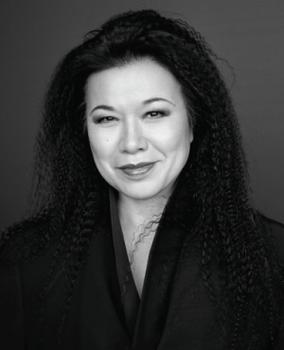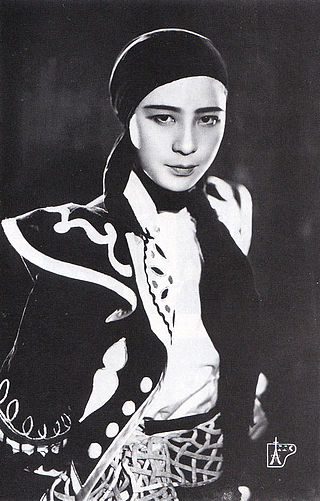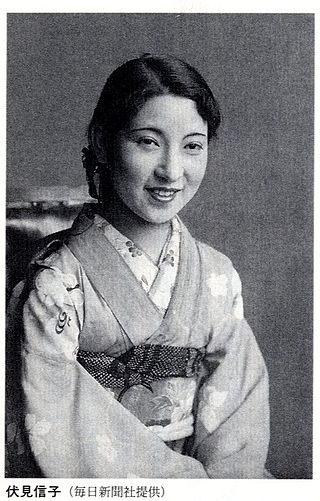Eiko Koike is a Japanese actress.
Eiko is a feminine Japanese given name. Eikō, also spelled Eikou or Eikoh, is a masculine Japanese given name. The meanings of these names depend on the kanji used to write them.
Eiko Masuyama is a Japanese actress and narrator. She works for Aoni Production. She is most known for originating the roles of Fujiko Mine, Honey Kisaragi, and Bakabon's Mama.

Eiko Ishioka was a Japanese art director, costume designer, and graphic designer known for her work in stage, screen, advertising, and print media.
Machiko Tezuka is a Japanese idol, and member of SDN48. She has previously had careers as a gravure idol/bikini model under the stage name Ourei Harada, and Eiko Maeda, as a member of idol group SKE48.

Eiko Yamazawa was a renowned Japanese photographer. She is considered one of Japan's earliest women photographers and is among the few women photographers in Japan who were active both before and after World War II. First trained in Nihonga, she later studied photography in the U.S. under the mentorship of Consuelo Kanaga, and also exposed to the work of Kanaga's contemporaries such as Paul Strand and Edward Weston.

Michiko Maeda is a Japanese film and television actress who became known as the first Japanese actress to appear in a nude scene in a mainstream film.

Sakae Tsuboi was a Japanese novelist and poet.

Takiko Mizunoe, born Umeko Miura, was a Japanese actress, film producer, and radio and TV presenter. She was born in Otaru, Hokkaido, and began her career by acting in Shochiku's musical theatre troupe. Later she became one of Japan’s first female film producers, working with the actors Yujiro Ishihara and Masumi Okada and the director Koreyoshi Kurahara at Nikkatsu during the studio’s golden age. Films she produced include Season of the Sun and Crazed Fruit. She also twice hosted the New Year’s Eve music show Kōhaku Uta Gassen.
Mieno Shigeko, better known as Mieno Eiko, was a Japanese politician for the Social Democratic Party (SDP).

Yoshiko Okada was a Japanese stage and film actress who defected to the Soviet Union in the 1930s.

Sumiko Mizukubo is a Japanese former actress active during the silent film era in the early 1930s.
Chiemi Amako, better known as Chiemi Hori, is a Japanese singer, actress, and entertainer represented by Horipro, and later Shochiku Geino. Her stage name is Chiemi.
Kinnosuke Takamatsu was a Japanese actor.

Iida Chōko was a Japanese actress. Her real name was Shigehara Tefu. She played working class women and grandmothers, and appeared in more than 300 films. Her husband was cameraman Shigehara Hideo.

Chieko Naniwa was a Japanese actress who was active from the 1920s to the 1970s. She is best known for playing geisha in several films, such as Keiji Mizoguchi's A Geisha, and the Forest Spirit in Akira Kurosawa's Throne of Blood. Her birth name was Kikuno Nanko.

Nobuko is a 1940 Japanese drama film directed by Hiroshi Shimizu. It is based on the novel of the same name by Bunroku Shishi.

Shizue Tatsuta was the stage name of Shizue Shiono, a Japanese actress who starred in silent movies. Born in Yamagata Prefecture, she briefly attended Japan Women's University but did not graduate. Moving to Kyoto and joining the Shochiku Studio in 1924, she subsequently starred in over seventy silent films, primarily in the role of modern girl. Her last film, Educating Father(おやぢ教育) was released in 1935. After retiring from acting, she opened a bar in Tokyo, the city in which she ultimately died aged 58.

Nobuko Fushimi is a Japanese actress and singer who was active in the 1930s. She was also known by her alias Nobue Fushimi.
Otome Amatsu was a Master of Japanese dance, TV and musical actress most widely recognized as Takarazuka Revue Leader of the Moon Troupe from 1928 to 1933. She later served as a director of the Takarazuka Revue Company. Her stage name was derived from a poem by Henjō in the Ogura Hyakunin Isshu. She was also called "Treasure of Takarazuka".


















